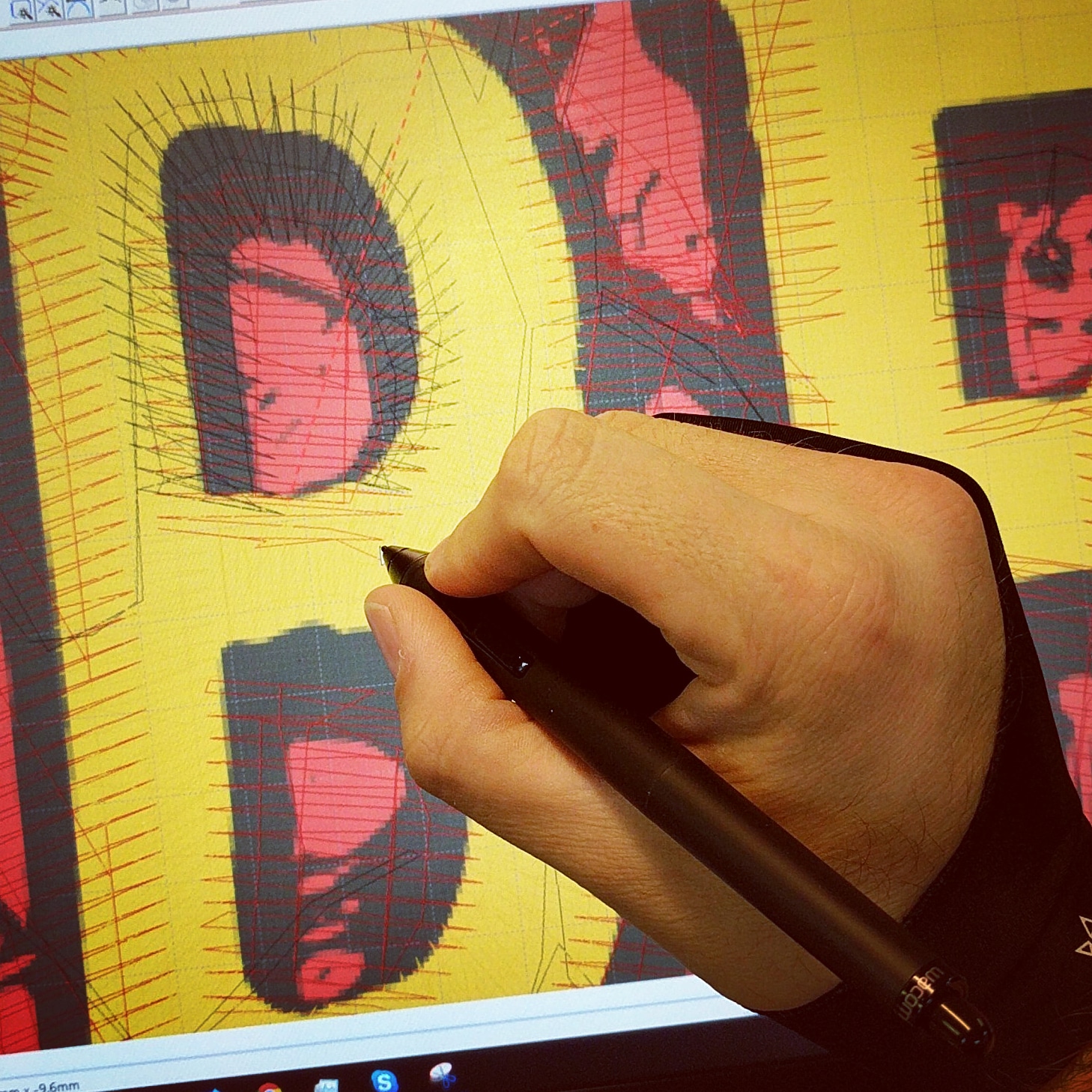Custom-made Digitizing for Embroidery: Tailored to Your Demands
Wiki Article
Simplifying the Art of Needlework Digitizing: Step-by-Step Guide
As modern technology continues to advancement, the digitization procedure has become much more available, enabling fanatics to bring their intricate layouts to life with ease. In this overview, we will certainly decipher the intricacies of needlework digitizing, breaking down each action carefully to improve the procedure and equip both newbies and skilled embroiderers alike.Understanding Embroidery Digitizing Software
Embroidery digitizing software program serves as a critical device for transforming detailed layouts right into digital formats suitable with embroidery makers, promoting exact stitching and modification. This customized software application allows individuals to import various image documents formats, such as JPG or PNG, and convert them right into needlework machine-readable formats like DST, EXP, or PES - Digitizing for Embroidery. By utilizing attributes like stitch modifying, rug alternatives, and string color choice, digitizing software application allows individuals to manage every element of the style procedureFurthermore, progressed embroidery digitizing software provides tools for producing intricate designs, adjusting stitch density, and including intricate information. Individuals can also sneak peek the design before sewing it out, guaranteeing accuracy and reducing errors. In addition, numerous software program programs provide automated features that aid enhance the digitizing process, conserving time and initiative.
Comprehending the capabilities of embroidery digitizing software is necessary for attaining top quality outcomes in embroidery tasks. By grasping this device, embroidery enthusiasts and professionals can unleash their creativity and bring detailed designs to life with accuracy and performance.

Choosing the Right Layout Documents
After familiarizing yourself with the capabilities of needlework digitizing software program, the next crucial action in the procedure is choosing the best layout declare your task. Digitizing for Embroidery. When picking a style apply for embroidery digitizing, it's vital to take into consideration the complexity of the layout, the dimension of the end product, and the sort of textile you will certainly be collaborating withFor complex layouts with fine details, a high-resolution image or vector file is recommended to make sure that the needlework maker can properly reproduce the layout. Furthermore, the dimension of the final product plays a considerable duty in picking the best style documents. Bigger designs may require higher resolution data to keep clarity and intensity.
In addition, the kind of textile you will certainly be embroidering on affects the selection of style file. Different materials may need modifications in the layout data to make sure that the stitches are properly straightened and the style looks like planned. By carefully selecting the best design file based upon these variables, you can set yourself up for an effective needlework digitizing procedure.
Digitizing Tools and Techniques
Using specialized software program and precision methods, digitizing tools are vital in transforming elaborate layouts into embroidery-ready files. Needlework digitizing software application, such as Wilcom, Hatch, or Embrilliance, supplies the essential system to transform artwork into stitch data. These programs supply functions like stitch editing and enhancing, padding choices, and text devices to ensure the style converts flawlessly onto material.One of the essential techniques in digitizing is creating a clear path for the embroidery equipment to adhere to. This includes digitizing each component of the layout with precision, determining stitch kinds, densities, and instructions. By using tools like digitizing tablet computers this or software-specific plugins, embroiderers can attain a high level of accuracy in their digitized styles.
Moreover, understanding the art of rug stitching is essential for producing quality needlework. Underlay sewing maintains the textile and creates a structure for the design, ensuring that the end product is both aesthetically enticing and durable. By comprehending these digitizing devices and techniques, embroiderers can elevate their craft and bring elaborate designs to life with accuracy and efficiency.
Personalizing Stitch Kinds and Directions
The selection of stitch types can substantially influence the general appearance and texture of the embroidered style. By tactically integrating these stitch types, embroiderers can attain deepness and measurement in their layouts.Moreover, the direction of stitches plays a vital duty in improving the visual allure of the last needlework. Varying stitch instructions can include structure, emphasize certain aspects, and produce aesthetic rate of interest. For example, changing the angle of stitches can simulate motion or natural patterns like fur or feathers. By exploring with various stitch angles and patterns, embroiderers can bring their styles to life with remarkable information and intricacy. Grasping the art of tailoring stitch types and directions empowers embroiderers to release their creativity and boost the quality of their work.
Testing and Refining Your Digitized Style
To guarantee the accuracy and quality of your digitized style, comprehensive testing and refinement are necessary action in the Continue embroidery digitizing process. When you have actually completed the digitization of your design, it is vital to check it prior to waging the actual embroidery. Examining allows you to recognize any type of prospective concerns such as thread breaks, sew thickness troubles, or design distortions that may impact the final outcome.
After testing, it is essential to fine-tune your digitized layout based on the feedback from the more test sew-out. This may entail tweaking sew settings, readjusting densities, or making modifications to the overall design to achieve the wanted end result. By repeating with screening and improvement, you can adjust your digitized design to excellence before moving on with the actual embroidery procedure.
Conclusion
To conclude, mastering the art of embroidery digitizing requires an extensive understanding of the software program, selecting the appropriate layout data, utilizing digitizing tools and strategies, customizing stitch kinds and instructions, and testing and refining the digitized style. By adhering to these actions, embroiderers can streamline the digitizing procedure and develop high-quality stitched styles with precision and efficiency.Report this wiki page